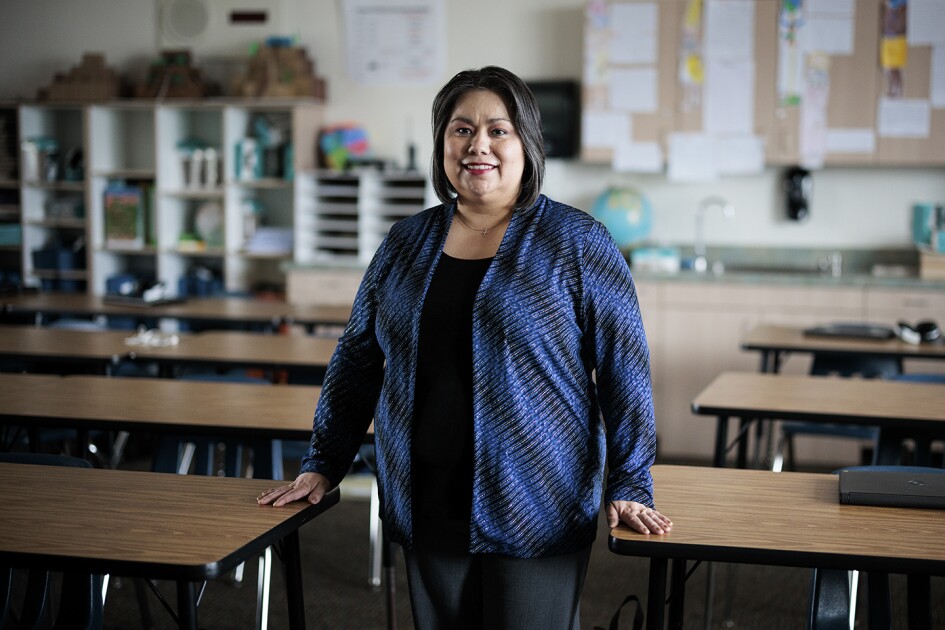Special education advocacy groups are cheering a ruling from the U.S. Supreme Court that a special education student’s individualized education program must be “reasonably calculated to enable a child to make progress appropriate in light of the child’s circumstances,” in the language of the opinion.

The decision in Endrew F. v Douglas County School Board, is seen as strengthening the Individuals With Disabilities Education Act. But the ruling, written by Chief Justice John Roberts, does not address the central question of whether the student at the center of the case was provided an IEP that enabled him to make appropriate progress. The unanimous decision from the high court means the case will go back to a lower court for further argument.
That didn’t stop advocates from praising the decision.
“The court recognizes that every child should have the chance to meet challenging objectives and advance from grade to grade,” said a statement from Michael K. Yudin, who served assistant secretary for the office of special education and rehabilitative services at the U.S. Department of Education during the Obama administration.
The Council for Parent Attorneys and Advocates said “we expect this unanimous decision ... to be transformative in the lives of the students and families for whom the law is intended to benefit.”
Sen. Patty Murray of Washington, the top Democrat on the Senate education committee, said the ruling “sends a critically needed message: Every child deserves the opportunity to reach their full potential and receive a high-quality public education. With this ruling, the court has rightly reaffirmed Congress’ intent in [the Individuals With Disabilities Education Act] to hold schools accountable for providing students with disabilities meaningful educational benefit from the instruction and services they receive.”
The standard is not a bright line that tells districts what to do. Future disagreements could center around the definition of appropriate progress, said Perry A. Zirkel, a professor of education and law at Lehigh University in Bethlehem, Pa.
“Most practitioners want the law to spell things out, so they can go back to their job and know where they’re at,” Zirkel said—like a speed limit on a highway. In this case, he said, “the speed limit is, ‘Drive appropriately in the individual circumstance in which you’re traveling.’”
Melissa Wischerath, an Oregon attorney who represents parents, said that the ruling does have the potential to be a game-changer for her clients. She spent part of Wednesday requesting extra time to refile briefs in various cases to take into account the Supreme Court ruling.
Many of her clients’ children were faced with IEPs that barely changed from year to year, she said, and the floor for progress was very low. “I think what we’re going to see now is a more-tailored approach” from schools, she said.
The case is based on a lawsuit from filed by parents in Colorado. They had placed their child, Endrew, in private school, arguing that the IEP developed by the district was inadequate for him to make any educational progress. (I wrote a full backgrounder on the Endrew F. case in January, before the Supreme Court held oral arguments.)
The school district prevailed before an administrative law judge, federal district court and the court of appeals.
“In [Douglas County School District,] we are ever dedicated to the education of all of our 67,000 students. We respect the decision of the Supreme Court justices and we are confident that the work we do for our students already meets this higher standard,” said district attorney William Trachman in a statement.
“Notably, the court did not hold that Douglas County School District failed to meet the new standard, or say that DCSD can’t proceed to prove that it met that standard in the Endrew F. matter. Indeed, in this case, the Douglas County School District offered an appropriate [IEP] and we look forward to proving to the lower courts that the IEP meets the new, higher standard,” Trachman’s statement said.
Case Connected to Supreme Court Nominee Gorsuch
To render its decision in the Endrew case, the 10th Circuit relied on an earlier decision that it had made in the case Thompson R2 School District v. Luke P. That 2008 decision, written by Supreme Court nominee Neil Gorsuch, was a ruling against Luke P.'s parents. Advocacy organizations have taken aim at Gorsuch, saying he is holding students with disabilities to a low educational standard.
The Endrew ruling came up during Gorsuch’s confirmation hearing, in its third day on Wednesday; my colleague Mark Walsh has covered some of the questions from senators and Gorsuch’s responses.
In one exchange with Sen. Ted Cruz, the Texas Republican noted that the Luke P. decision relied on a yet-earlier case that had been decided by the 10th Circuit in 1996.
“My colleagues have repeatedly demanded that Judge Gorsuch follow precedent,” said Cruz. “This is another example of Judge Gorsuch doing exactly that‐following precedent.”
He asked the nominee whether he would be bound to follow a Supreme Court decision that upset an appeals court precedent.
“Yes, senator.” Gorsuch said. “That’s how it works.”



